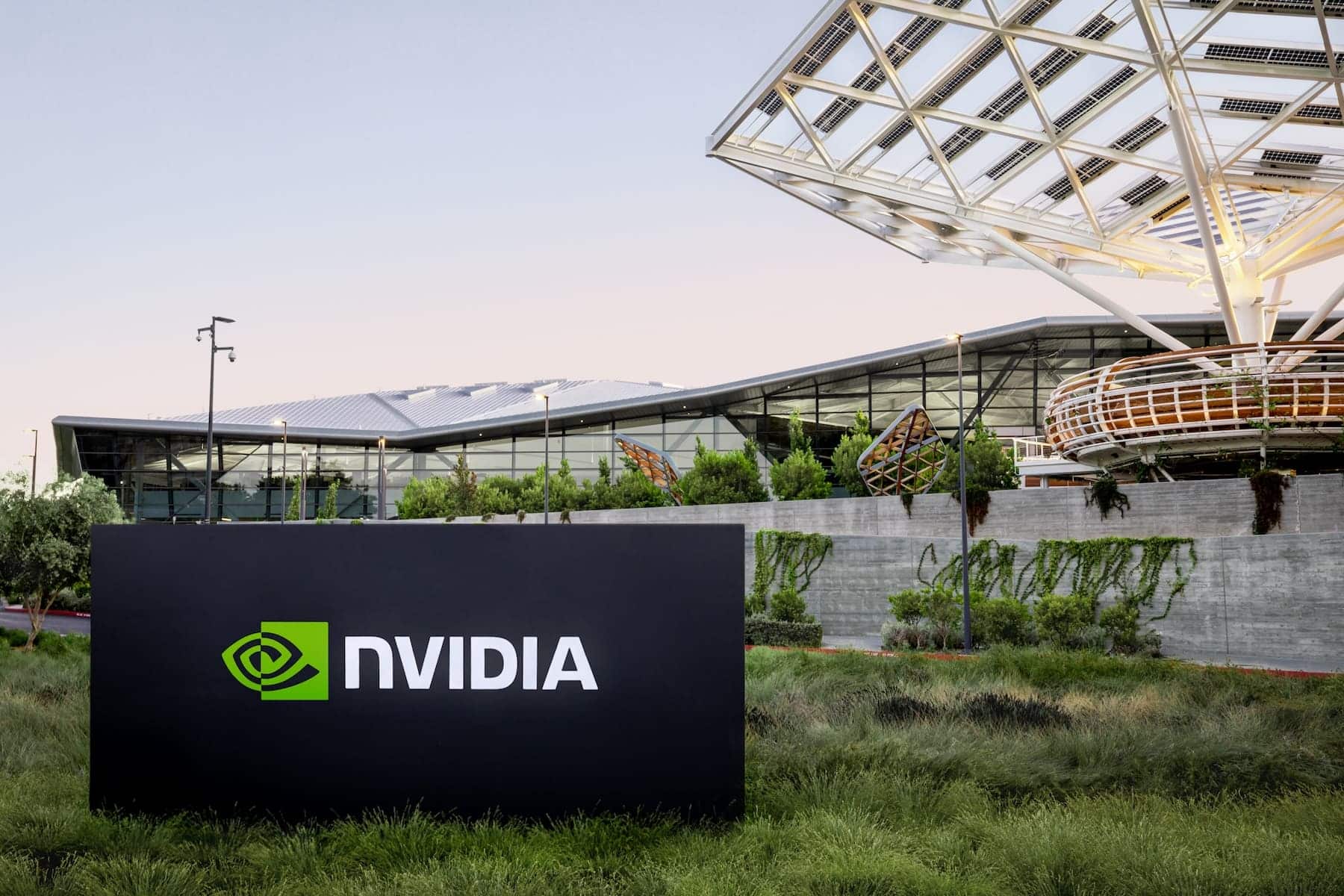NVIDIA has once again marked a historic day on Wall Street. The company led by Jensen Huang released its second fiscal quarter of 2026 (ended July 27, 2025) with figures that confirm its central role in the global race for Artificial Intelligence.
Revenues reached $46.743 billion, representing a 6% increase from the previous quarter and a stunning 56% year-over-year rise. Net income hit $26.422 billion, a 41% jump from Q1 and 59% higher than last year.
The highlight is the data center business, which continues to be the main driver for the company thanks to the new Blackwell architecture, now a sector benchmark.
Financial snapshot for the quarter
- Total revenue: $46.743 billion (+6% quarter-over-quarter / +56% year-over-year)
- Data Center revenue: $41.100 billion (+5% QoQ / +56% YoY)
- GAAP net income: $26.422 billion (+41% QoQ / +59% YoY)
- GAAP earnings per share: $1.08 (+42% QoQ / +61% YoY)
- GAAP gross margin: 72.4%
The gross margin benefited from the release of $180 million in reserved inventory of H20 GPUs, initially designed for China but blocked due to U.S. restrictions. Without this impact, the margin would have been 72.3%, still very solid.
Blackwell: Driving the new era of NVIDIA
“Blackwell is the AI platform the world has been waiting for,” said Jensen Huang, referencing the new chip redefining large-scale computing.
The company announced that production of the Blackwell Ultra is already at maximum speed, with demand described as “extraordinary.” Early adopters include Disney, Foxconn, Hitachi, Hyundai, Lilly, SAP, and TSMC.
NVIDIA is also working with European governments (France, Germany, Italy, Spain, and the UK) to develop Europe’s first industrial AI cloud, and is involved in supercomputing projects in the US, Japan, and Germany (such as JUPITER and FugakuNEXT).
Additionally, NVIDIA introduced NVFP4, a new 4-bit format promising to revolutionize inference in large-scale language models by reducing latency and energy consumption.
Growth in gaming, visualization, and automotive sectors
While data centers generate nearly 90% of revenues, other divisions also showed strength:
- Gaming: $4.3 billion (+14% QoQ / +49% YoY). The new GeForce RTX 5060 Blackwell quickly became the fastest-adopted x60 class GPU in the company’s history.
- Professional visualization: $601 million (+18% QoQ / +32% YoY), supported by new RTX PRO 4000 SFF and RTX PRO 2000 Blackwell GPUs.
- Automotive and robotics: $586 million (+3% QoQ / +69% YoY), with the launch of the DRIVE AV platform and Jetson AGX Thor modules, designed to power millions of factory and autonomous robots.
Mass share repurchases and dividends
NVIDIA returned $24.3 billion to shareholders in the first half of the year via buybacks and dividends. As of the quarter’s end, $14.7 billion remain to be executed, with the board approving an additional $60 billion in buybacks with no set expiration date.
A dividend of $0.01 per share will also be paid on October 2, 2025.
Outlook for Q3
The company projects for fiscal Q3 2026:
- Estimated revenue: $54 billion ± 2%
- GAAP gross margin: 73.3%
- Non-GAAP gross margin: 73.5%
- GAAP operating expenses: $5.9 billion
- Non-GAAP operating expenses: $4.2 billion
- Tax rate: 16.5%
If these estimates are met, NVIDIA would surpass $100 billion in cumulative revenue in just six months — a record in the semiconductor industry.
Geopolitical context and China’s case
One notable point is that during this quarter, no H20 GPUs were sold to Chinese clients, in compliance with U.S. restrictions.
Nevertheless, NVIDIA managed to reposition inventory to other markets. This episode highlights the risks of geopolitical tension but also demonstrates NVIDIA’s ability to absorb shocks without compromising its record figures.
Meanwhile, China continues to develop indigenous alternatives in architectures like RISC-V and local accelerators, which could intensify competition in the medium term.
A company redefining the sector
NVIDIA is not only leading chip manufacturing but has become the epicenter of global digital transformation. From quantum supercomputing to generative AI, cloud gaming, and robotics, its footprint spans all corners of the tech industry.
The challenge will be maintaining this leadership amid energy constraints, regulatory pressures, and increasingly aggressive competitors such as AMD, Google, and some emerging Chinese players.
Frequently Asked Questions (FAQ)
What is NVIDIA’s main growth driver?
The demand for GPUs for data centers and AI, fueled by the Blackwell architecture.How do restrictions in China affect NVIDIA?
In the short term, NVIDIA has repositioned inventory and maintained margins. In the medium term, geopolitical tensions pose a structural risk.What are the expectations for the next quarter?
The company anticipates surpassing $54 billion in revenue, with gross margins above 73%, marking a historic year.Is gaming still relevant for NVIDIA?
Yes, although it accounts for a smaller share of revenue, it continues to grow strongly with the adoption of Blackwell GPUs and technologies like DLSS 4.Why is NVIDIA called the “indispensable” AI provider?
Because it dominates hardware (Blackwell GPUs, NVLink, DGX Cloud) and software (CUDA, Omniverse, NVIDIA AI Enterprise), creating an ecosystem difficult for rivals to replicate.
via: Financial News

